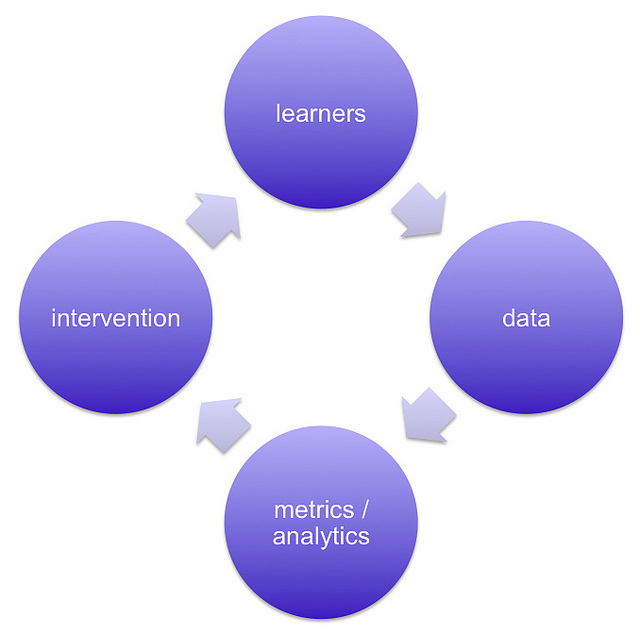Learning analytics is becoming one of the hottest topics in higher education, mostly in theoretical/research contexts but increasingly in real-world applications. Still in its early stages, it is a rapidly expanding and diversely defined subject area that intersects with data mining, data modeling, knowledge management, business intelligence, information storage/retrieval and potentially much more.
There are quite a few definitions of learning analytics in operational use. In his ELEARNSPACE blog, thought leader George Siemens states that learning analytics “is the use of intelligent data, learner-produced data, and analysis models to discover information and social connections, and to predict and advise on learning.”
George Siemens also references the definition adopted by the EDUCAUSE Next Generation Learning Challenges initiative: “the use of data and models to predict student progress and performance, and the ability to act on that information.” This multi-year grant program (backed by the Gates Foundation and other notable institutions) aims to “dramatically increase college readiness and completion through applied technology.” Personalized courses and blended course delivery models are among the focal areas of the current requests for proposals. (EDUCAUSE offers a wealth of resources on the topic of learning analytics here.)
One of the most straightforward definitions is on Wikipedia: “… the measurement, collection, analysis, and reporting of data about learners and their contexts, for purposes of understanding and optimizing learning and the environments in which it occurs.” This definition is leveraged in a recent paper on Learning and Knowledge Analytics to look at ways to “… view and plan for change at individual learning paths and educational institutions’ courses.”
As the concept of learning analytics and the tools, terminology and methods surrounding it develops a more coherent identity and focus, how might it benefit tutors and teachers in their work with individual students – in either academic or business settings? How can teachers and tutors use learning analytics to 1) know how individual students are doing and 2) decide how to tailor instruction to their needs?
These are the kinds of questions that the 2011 Horizon Report seems to be asking. In this context, learning analytics are seen as “the interpretation of a wide range of data produced by and gathered on behalf of students in order to assess academic progress, predict future performance, and spot potential issues.” Analysis models that process, format and display the data assist educators in interpreting it, with the goal of “tailoring educational opportunities to each student’s level of need and ability.” Ideally, in this view learning analytics would “create a far more robust and nuanced profile of students, in turn offering faculty members more insight.”
Likewise, the upcoming Learning Analytics and Knowledge conference references that learning analytics has the potential to address key aspects of an individual’s educational experience, like: identifying students in need of special help, reducing student attrition, and enhancing teaching methods.
So where is learning analytics being applied today to personalize learning? The School of One program uses learning analytics “playlists” on an everyday basis to dynamically develop personalized mathematics learning programs.
Socrato is also on the leading edge of developing learning analytics tools for both teachers and learners, in the realm of standardized testing. Socrato technology analyzes performance on online practice tests to identify students’ strengths and weaknesses, so that tutors and teachers can focus their energy where help is most needed.
What are your thoughts on the topic of learning analytics and how it can support learning – individually and collectively, now and in the future?
Featured image courtesy of dougclow.
SAT vs ACT: Choosing the Right Test [NEW EBOOK]
Download this free 20-Page Ebook for Tutors Now!
Our free 20-page ebook is a step-by-step guide on how to select the right test for your student. Learn everything you need to know about using the PLAN and PSAT to improve student scores, how to leverage learning analytics to select one test over the other, and other tips on how to take the guesswork out of selecting the ACT vs the SAT.












Great blog really enjoyed reading it. Have bookmarked you and will check back regular.
Pretty decent page. You’ll find most people buying wonderful arrange. This is mostly a help.
It’s an item different together with superior material. Could test to come back subsequently meant for even more many other intresting article content. kudos.
Blogs are so informative where we get lots of information on any topic. Nice job keep it up!! thanks a lot for posting..
I will note your feed to keep up to date with your approaching updates.Just striking and do uphold up the good work.